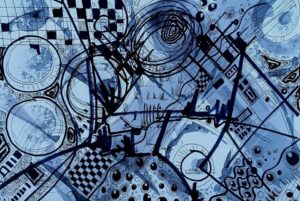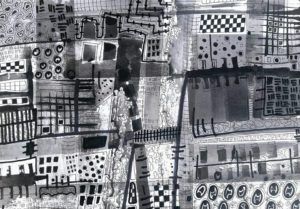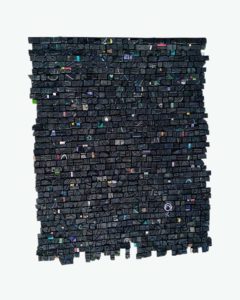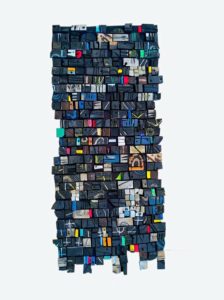
Patrick-Tagoe-Turkson: new work
About:
Ghana Contemporary artist Patrick Tagoe-Turkson draws on the historical traditional art concepts of his native Effutu State in Southern Ghana which is widely known for the Aboakyer (deer hunting) festival. As a Nature Artist living close to the sea, he collects materials for his work from the Atlantic Ocean. Currently he uses found flip-flops as the medium for his art. Patrick believes that found flip-flops carries memories. They have been worn by different people and had migrated from different places. Traces of identities of the original users are still visible and audible. He tries to enriching these memories through artistic processes by working with local migrant’s flip-flop menders as a way of helping them obtain psychological support.

Tagoe-Turskon is known for his Curio Kiosk Project in 2009 (Ghana) and Memory Repairs in 2016 (Frappant Gallery, Hamburg) where he had used Kiosk constructed from flip-flops as focus for the traumatic experiences and shelters of migrants. Thus Turkson’s art is made not so much for the sake of “beauty” but more importantly the subtle therapeutic and transformative power. He has also exhibited in solo exhibitions at the Nubuke Gallery in Accra, Ghana. In his current collection, He builds a type of comprehensive pattern of immersive, serial but not rigid ideas site that cleverly plays with the tension between the mundane, the beautiful and the tale within the transformation process from found flip-flops to art.


Tagoe-Turkson was born in 1978, in the Effutu State of Winneba, Ghana. He received his Master of Fine Art degree in Painting from the Kwame Nkrumah University of Science and Technology, Kumasi, Ghana in 2006. Apart from his several private collections and group and solo exhibitions in Ghana, South Africa, Haiti, Romania, Hungary, Germany, South Korea among others, Tagoe-Turkson has passed his knowledge by teaching at the Takoradi Technical University in Ghana as Senior Lecture, Writing Books, and organizing local art residencies and workshops. He continues to explore new possibilities of making art with nature and expanding his cultural traditions. Patrick lives alternatively in Kumasi and Takoradi (Ghana) with his family.
